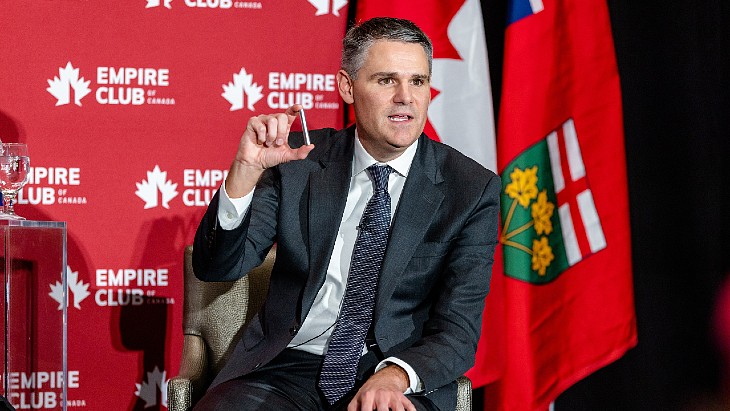IAEA sees progress made by SMR deployment initiative
.jpg)
The NHSI - announced in March 2022 by IAEA Director General Rafael Mariano Grossi - aims to facilitate the safe and secure deployment of small modular reactors (SMRs) to maximise their contribution to reach net-zero carbon emissions by 2050. It is actively developing a series of tools and publications to help advanced reactors become part of the solution addressing climate change and energy security. NHSI is now composed of 30 countries, 94 unique organisations and more than 200 contributors.
On 27 June, more than 120 NHSI participants convened to share feedback and suggestions on the work that has occurred so far and possible areas for enhancement going forward.
NHSI participants work in two separate but complementary tracks: the NHSI Regulatory Track and the NHSI Industry Track. Both tracks have topical working groups, and over the past year, both held 16 working group meetings.
Under the Regulatory Track, three working groups work in parallel to: build an information sharing framework; develop an international pre-licensing regulatory design review; and develop approaches to leverage other regulators' reviews. The Industry Track is focused on four objectives: harmonisation of high-level user requirements; information sharing on national standards and codes; experiments and validation of simulation computer codes to model SMRs; and accelerating the implementation of a nuclear infrastructure for SMRs.
Regulatory Track participants have produced approaches that will help countries to work together in SMR regulatory reviews, sharing resources and knowledge. "The implementation of these approaches will help regulators to learn from each other, increasing their trust that other regulatory frameworks that may initially seem different, are able to achieve good results," said Paula Calle Vives, Senior Nuclear Safety Officer at the IAEA.
For the nuclear industry, NHSI is identifying common approaches on codes and standards used as a part of design, manufacturing, construction, commissioning and operation of advanced reactors, like SMRs. "The SMR business model is often based on serial production, which means that after the deployment of the first-of-a-kind reactor, cost and time savings materialise under a standardised approach," said Aline des Cloizeaux, Director of Nuclear Power at the IAEA and Chair of the Industry Track.
One of the main objectives of the Industry Track is to harmonise high-level user requirements. An international reference is under development to help regulatory bodies understand what future licensees expect and to help embarking or expanding nuclear power countries structure their specifications for prospective suppliers. The Industry Track is also forming a network and associated platform for resource sharing on experiments and code validation for SMRs.
Technical publications and toolkits developed through the NHSI initiative are expected to be available by the end of 2024.
Speaking at the opening of the NHSI plenary meeting, Grossi said: "Across all continents, policy makers and the public are turning to nuclear energy to mitigate climate change, ensure energy security and deliver a just, reliable, affordable and timely transition to net-zero. We must step up as international organisations, regulators, policy makers and industry. Nuclear energy faces opportunities and headwinds, including a reputation of unfulfilled promises. Getting it right will require a concerted, global effort.
"Harmonisation of the regulatory process reduces uncertainty. It helps to lower the cost of building and deploying SMRs. Harmonisation of approaches facilitates international trade of SMRs and components as developers design and manufacture reactors that comply with a more uniform set of global standards rather than having to deal with multiple, sometimes conflicting, sets of requirements in different countries."
"We're keen to work with the IAEA on this important initiative and explore opportunities to streamline the safe and secure deployment of SMRs around the globe," commented Rolls-Royce SMR's Safety and Regulatory Affairs Director Helena Perry. "Rolls-Royce SMR is working with a range of developers, utilities and industrial customers, and we believe that there are real opportunities to capitalise on the progress we're making in the UK to streamline the process elsewhere in the world."
"For many years World Nuclear Association's Cooperation in Reactor Design Evaluation and Licensing (CORDEL) Working Group has been coordinating industry viewpoints and engaging with regulators to develop approaches to streamline the regulatory design review processes to accelerate the deployment of standardised reactor designs," said a World Nuclear Association spokesperson.
"We have been pleased to be a key partner within the IAEA NHSI, which over the last year has brought a lot of visibility to this important issue, and substantially contribute to the outcomes. It is important that we maintain the momentum created and develop a truly coordinated approach that can provide maximum benefit to all stakeholders ultimately allowing faster deployment of standardised designs, while maintaining high levels of safety and national sovereignty in decision making."
_92619.jpg)

_84504.jpg)







_88592.jpg)

